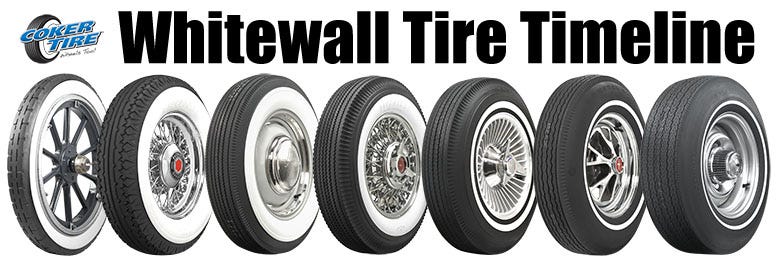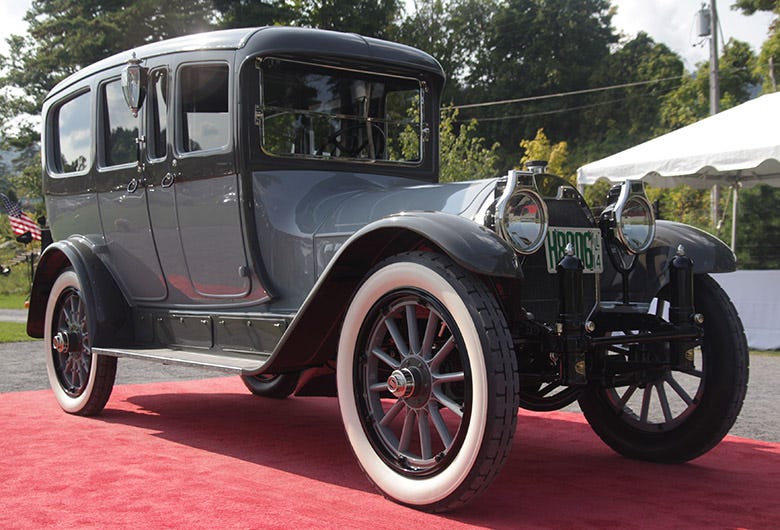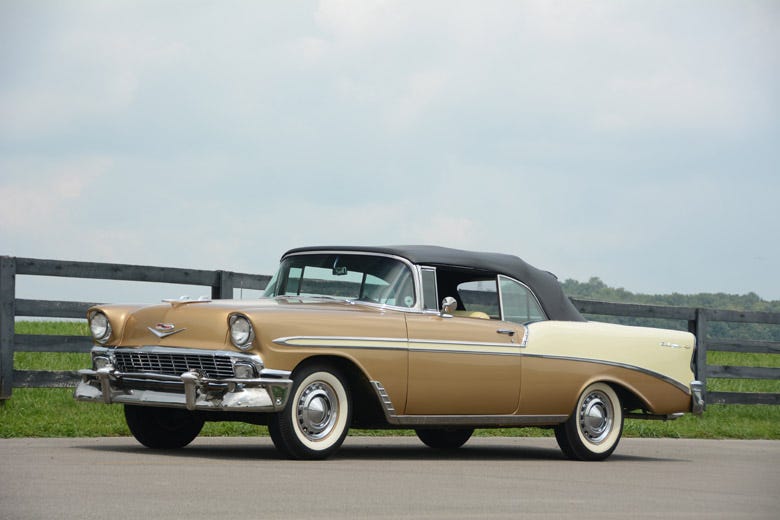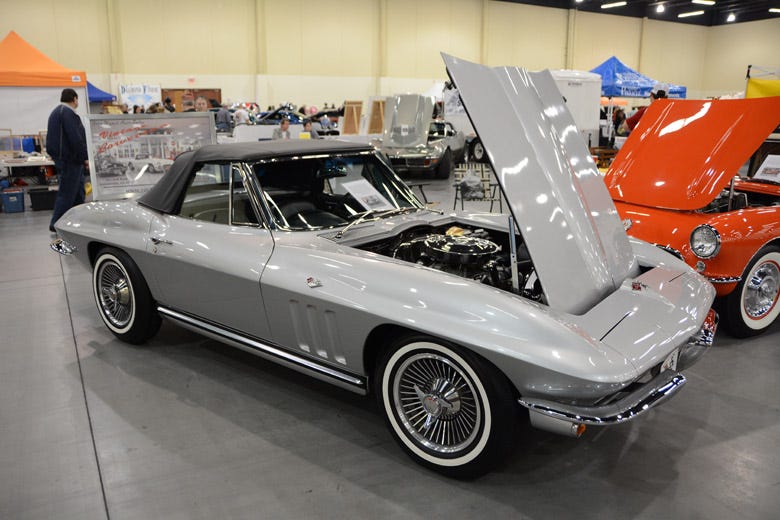The History and Timeline of Whitewall Tires
February 15, 2018

Coker Tire specializes in whitewall tires, so we thought it would be cool to have a little history lesson about the history of whitewalls. To find the earliest usage of a whitewall tire, you have to rewind the clock more than 100 years. Originally, automotive tires were off white in color, due to the natural color of the rubber formula used by tire companies. Zinc oxide would later be used to give the tires a more bright white color. Then, in 1910, B.F. Goodrich used a substance called "carbon black" in the manufacturing process. This formula strengthened the rubber, which was quite important considering the condition of the roads back then. When mixed with the raw materials, the carbon black caused the tire to be black. A short time later, a smaller tire company jumped on the carbon black bandwagon, but only added it to the tread surface as a cost savings. The result? Black tread and white sidewalls.
 While the first whitewall tire wasn't intended to be a style enhancer, it quickly caught on and other tire companies began producing purpose-built whitewall tires. By the 1920's, whitewall tires became more popular on high end luxury cars, such as Duesenberg, but more conservative car manufacturers didn't adopt whitewall tires as a factory option until the 1930's. For instance, Ford first introduced the whitewall tire option in 1934. Whitewall tires became a popular option for passenger cars, only pausing briefly for World War II and the Korean War, due to materials shortage. From there, whitewall tires offered beautiful styling to classic American cars, such as Chevrolet's Bel Air series, Ford's Fairlane and the Chrysler Corporation's line of luxurious convertibles and sedans.
While the first whitewall tire wasn't intended to be a style enhancer, it quickly caught on and other tire companies began producing purpose-built whitewall tires. By the 1920's, whitewall tires became more popular on high end luxury cars, such as Duesenberg, but more conservative car manufacturers didn't adopt whitewall tires as a factory option until the 1930's. For instance, Ford first introduced the whitewall tire option in 1934. Whitewall tires became a popular option for passenger cars, only pausing briefly for World War II and the Korean War, due to materials shortage. From there, whitewall tires offered beautiful styling to classic American cars, such as Chevrolet's Bel Air series, Ford's Fairlane and the Chrysler Corporation's line of luxurious convertibles and sedans.
 An interesting note to consider is the width of whitewalls. When whitewalls really became popular, they were used on Firestone Balloon tires, which featured tall sidewalls. These tires had whitewalls of nearly five inches. By the 1950's, whitewalls were at a pretty standard 3 inches, but that didn't last long. Around 1954 through 1956, you could expect to see whitewalls from 2-1/2 to 2-11/16 inches on American cars. Then, 1957 through 1961 saw another change with whitewalls ranging from 2-1/4 to 2-1/2 inches. Finally, the big change happened in 1962, when most American automotive manufacturers made the switch to 1 inch whitewalls. From there, whitewalls got even more narrow, until finally getting down to 3/8-inch during the muscle car era. The only exception in this whitewall width timeline is luxury cars. Some Lincolns and Cadillacs retained the wide whitewall look longer than other passenger cars, and they also held onto the 3/4-inch whitewall for quite some time.
An interesting note to consider is the width of whitewalls. When whitewalls really became popular, they were used on Firestone Balloon tires, which featured tall sidewalls. These tires had whitewalls of nearly five inches. By the 1950's, whitewalls were at a pretty standard 3 inches, but that didn't last long. Around 1954 through 1956, you could expect to see whitewalls from 2-1/2 to 2-11/16 inches on American cars. Then, 1957 through 1961 saw another change with whitewalls ranging from 2-1/4 to 2-1/2 inches. Finally, the big change happened in 1962, when most American automotive manufacturers made the switch to 1 inch whitewalls. From there, whitewalls got even more narrow, until finally getting down to 3/8-inch during the muscle car era. The only exception in this whitewall width timeline is luxury cars. Some Lincolns and Cadillacs retained the wide whitewall look longer than other passenger cars, and they also held onto the 3/4-inch whitewall for quite some time.
 Today, whitewalls are all but phased out of passenger car production, but we have products to fit more than 100 years of collectible cars. From the early 1900's through the 2000's, we have whitewall tires for original and customized applications. Give us a call or browse the website to check out all of our whitewall tires. [products]
Today, whitewalls are all but phased out of passenger car production, but we have products to fit more than 100 years of collectible cars. From the early 1900's through the 2000's, we have whitewall tires for original and customized applications. Give us a call or browse the website to check out all of our whitewall tires. [products]
 While the first whitewall tire wasn't intended to be a style enhancer, it quickly caught on and other tire companies began producing purpose-built whitewall tires. By the 1920's, whitewall tires became more popular on high end luxury cars, such as Duesenberg, but more conservative car manufacturers didn't adopt whitewall tires as a factory option until the 1930's. For instance, Ford first introduced the whitewall tire option in 1934. Whitewall tires became a popular option for passenger cars, only pausing briefly for World War II and the Korean War, due to materials shortage. From there, whitewall tires offered beautiful styling to classic American cars, such as Chevrolet's Bel Air series, Ford's Fairlane and the Chrysler Corporation's line of luxurious convertibles and sedans.
While the first whitewall tire wasn't intended to be a style enhancer, it quickly caught on and other tire companies began producing purpose-built whitewall tires. By the 1920's, whitewall tires became more popular on high end luxury cars, such as Duesenberg, but more conservative car manufacturers didn't adopt whitewall tires as a factory option until the 1930's. For instance, Ford first introduced the whitewall tire option in 1934. Whitewall tires became a popular option for passenger cars, only pausing briefly for World War II and the Korean War, due to materials shortage. From there, whitewall tires offered beautiful styling to classic American cars, such as Chevrolet's Bel Air series, Ford's Fairlane and the Chrysler Corporation's line of luxurious convertibles and sedans.
 An interesting note to consider is the width of whitewalls. When whitewalls really became popular, they were used on Firestone Balloon tires, which featured tall sidewalls. These tires had whitewalls of nearly five inches. By the 1950's, whitewalls were at a pretty standard 3 inches, but that didn't last long. Around 1954 through 1956, you could expect to see whitewalls from 2-1/2 to 2-11/16 inches on American cars. Then, 1957 through 1961 saw another change with whitewalls ranging from 2-1/4 to 2-1/2 inches. Finally, the big change happened in 1962, when most American automotive manufacturers made the switch to 1 inch whitewalls. From there, whitewalls got even more narrow, until finally getting down to 3/8-inch during the muscle car era. The only exception in this whitewall width timeline is luxury cars. Some Lincolns and Cadillacs retained the wide whitewall look longer than other passenger cars, and they also held onto the 3/4-inch whitewall for quite some time.
An interesting note to consider is the width of whitewalls. When whitewalls really became popular, they were used on Firestone Balloon tires, which featured tall sidewalls. These tires had whitewalls of nearly five inches. By the 1950's, whitewalls were at a pretty standard 3 inches, but that didn't last long. Around 1954 through 1956, you could expect to see whitewalls from 2-1/2 to 2-11/16 inches on American cars. Then, 1957 through 1961 saw another change with whitewalls ranging from 2-1/4 to 2-1/2 inches. Finally, the big change happened in 1962, when most American automotive manufacturers made the switch to 1 inch whitewalls. From there, whitewalls got even more narrow, until finally getting down to 3/8-inch during the muscle car era. The only exception in this whitewall width timeline is luxury cars. Some Lincolns and Cadillacs retained the wide whitewall look longer than other passenger cars, and they also held onto the 3/4-inch whitewall for quite some time.
 Today, whitewalls are all but phased out of passenger car production, but we have products to fit more than 100 years of collectible cars. From the early 1900's through the 2000's, we have whitewall tires for original and customized applications. Give us a call or browse the website to check out all of our whitewall tires. [products]
Today, whitewalls are all but phased out of passenger car production, but we have products to fit more than 100 years of collectible cars. From the early 1900's through the 2000's, we have whitewall tires for original and customized applications. Give us a call or browse the website to check out all of our whitewall tires. [products]
